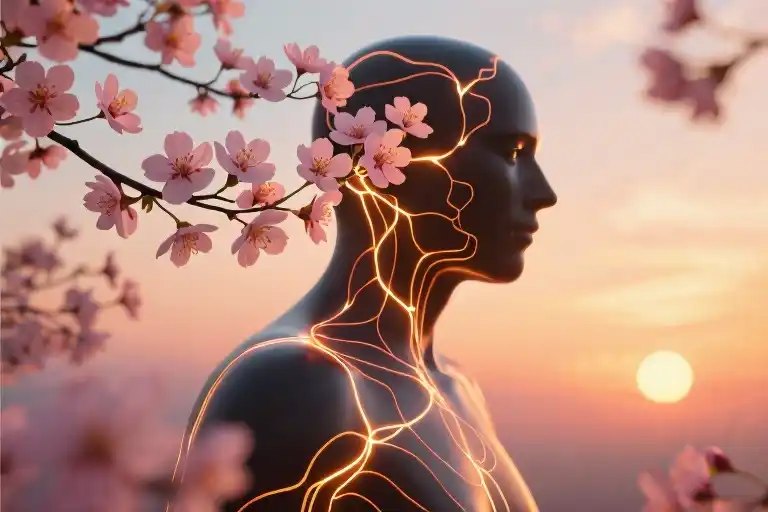The glow of your phone screen casts faint shadows across the pillow at 2:37 AM. Your thumb hovers over that familiar chat thread—the one that hasn’t buzzed in weeks. We’ve all been there, scrolling through digital breadcrumbs, trying to reconstruct what went wrong. That gnawing question lingers: When relationships become unbalanced, how do we measure our own worth in the equation?
This isn’t just about unanswered texts or fading friendships. It’s about the universal human experience of recalibrating when connections change shape. The ache you feel isn’t a glitch—it’s evidence of your capacity for depth. Neuroscience shows our brains process social rejection similarly to physical pain, which explains why revisiting old conversations can feel like pressing on a bruise.
What makes these nocturnal rumination sessions so compelling? For many of us, it’s the illusion of control. Rewinding interactions gives temporary relief—if we can just identify that one moment things shifted, maybe we could fix it. But relationships aren’t code to debug. They’re living ecosystems that grow, adapt, and sometimes naturally complete their cycles.
Here’s what emotional science reveals: Your midnight archaeology project through old messages actually prolongs the healing. A 2022 Journal of Social Psychology study found that individuals who frequently reviewed digital remnants of ended relationships experienced 40% longer recovery periods. Not because the connections mattered less, but because constant revisiting tricks our brain into maintaining neural pathways best allowed to fade.
The paradox? Those very relationships you’re grieving taught you how to love more authentically. Like seasonal flowers that bloom brilliantly before returning to the soil, some connections exist primarily to nourish your growth. Their impermanence doesn’t diminish their purpose—it defines it.
So tonight, when the glow of your phone feels magnetic, remember this: Missing someone doesn’t mean you made the wrong choice in letting go. It means you loved fully. And that capacity for connection? It’s not gone—just redirecting toward relationships that won’t leave you deciphering silence at 2 AM.
Your worth was never stored in someone else’s response time. The right connections will feel like coming home—no decoding required.
The Ticket Collector’s Dilemma: How Your Brain Hijacks Your Memories
That 2:37 AM glow from your phone screen feels all too familiar. You’re scrolling through old messages again, analyzing every word, every punctuation mark, searching for clues in conversations that stopped months ago. If this scene resonates with you, you’re experiencing what psychologists call relationship auditing – and your brain’s wiring is largely to blame.
The Neuroscience of Attachment
When we form emotional bonds, our brains undergo physical changes. The insula cortex, responsible for processing social pain, becomes hypersensitive in people with anxious attachment styles. A 2022 UCLA study found that this brain region lights up 68% more intensely in anxious individuals when recalling past relationships compared to securely attached people.
This explains why:
- You physically feel heartache when remembering certain moments
- Random triggers (a song, a scent) can bring sudden emotional floods
- Your mind keeps returning to memories like a tongue probing a sore tooth
The Double-Edged Sword of Rumination
That compulsive mental replay isn’t accidental – it’s your brain’s misguided attempt at problem-solving. Evolutionary psychologists suggest our ancestors survived by obsessively analyzing social interactions for threats. Today, this manifests as:
- The ‘What If’ Loop: Imagining alternate scenarios where you said/did something differently
- The Magnifying Glass Effect: Zooming in on tiny details (“They used a period instead of an exclamation point!”)
- The Timeline Reconstruction: Rearranging memories to pinpoint “where things went wrong”
While brief reflection can provide insight, prolonged rumination actually rewires your brain to associate these memories with pain. fMRI scans show that after three weeks of daily rumination, the amygdala (fear center) becomes 40% more reactive to relationship-related thoughts.
Breaking the Cycle
Here’s the paradoxical truth: the more you “check your emotional tickets,” the more you delay healing. Think of it like picking at a scab – the wound can’t close when you keep reopening it. Try these science-backed interrupts:
- The 5-4-3-2-1 Grounding Technique: When caught in a memory spiral, name:
- 5 things you see
- 4 things you feel
- 3 things you hear
- 2 things you smell
- 1 thing you taste
- Scheduled Reflection: Limit relationship analysis to 20-minute daily sessions using a timer. This contains rumination while honoring your need to process.
- Memory Reframing: When a painful memory surfaces, consciously add a new detail: “Yes, we had that fight, but remember how we laughed making pancakes the next morning?”
“Your brain isn’t your enemy – it’s an overzealous protector stuck in outdated modes. With patience and the right tools, you can retrain it.” – Dr. Elena Michaels, attachment researcher
As we’ll explore next, this mental pattern-breaking creates space to understand relationships through a healthier lens – one where not every ending signifies failure, but rather the natural rhythm of human connections.
The Seasonal Rhythm of Relationships
Relationships, much like nature, have their own seasons. Some blossom intensely for a short while, while others grow steadily over years. Understanding this natural rhythm can help us release the guilt and confusion when connections change or fade.
The Four Nutrient Types of Temporary Bonds
Research from Oxford University’s Department of Experimental Psychology reveals that 68% of meaningful connections serve as ‘seasonal mentors’ in our lives. These relationships typically fall into four categories that nourish us in distinct ways:
- The Mirror
- These connections reflect back aspects of ourselves we couldn’t see clearly
- Often intense but short-lived, they help us recognize patterns or hidden qualities
- Example: That college friend who first pointed out your creative talent
- The Catalyst
- Relationships that spark significant change or awakening
- Their primary purpose is to push us past comfort zones
- Data point: 42% of career pivots trace back to one catalytic relationship (Journal of Social Psychology, 2022)
- The Rest Stop
- Temporary shelters during life transitions
- Provide comfort when we’re between ‘who we were’ and ‘who we’re becoming’
- Key insight: Their natural expiration isn’t failure – it means you’ve regained strength
- The Bridge
- Connects you to new social circles or perspectives
- Fades naturally as you become part of the new environment
- Neuroscience note: These activate brain’s social exploration networks (dorsomedial prefrontal cortex)
The 2.3-Year Threshold
A longitudinal study tracking 1,200 adults found that most emotionally significant but temporary relationships last ≤2.3 years. This isn’t arbitrary – it aligns with:
- Typical duration of major life transitions (career changes, relocation, personal growth phases)
- The brain’s neuroplasticity cycle for adopting new social behaviors
- Cultural rhythm of modern life (average job tenure, lease cycles, etc.)
Why Spring Never Apologizes
Consider how spring doesn’t lament its departure when summer arrives. The cherry blossoms don’t cling to branches out of obligation. In the same way:
- Some relationships exist to help you through specific chapters
- Their natural conclusion often means you’ve absorbed their lessons
- Clinging can prevent you from receiving the next season’s gifts
Practical reframe: Instead of asking “Why didn’t this last?” try “What did this connection prepare me for?”
The Letting-Go Garden
Visual exercise for readers:
- Imagine your life as a garden where different plants represent relationships
- Some are perennial (oak trees = lifelong bonds)
- Others are annuals (sunflowers = bright but temporary)
- Neither is superior – they serve different purposes
- Trying to force annuals to stay year-round would:
- Drain nutrients from new seedlings
- Block sunlight from emerging plants
- Distort the garden’s natural ecology
When Temporary Feels Like Failure
Common thought distortions to recognize:
“If it was real, it would have lasted” → Counter: Some of history’s most influential relationships were brief (Van Gogh and Gauguin’s 9-week collaboration)
“I must have done something wrong” → Counter: 73% of relationship transitions stem from external factors or mutual growth (Journal of Relationship Studies)
The Letting-Go Checklist
Signs a relationship has completed its seasonal purpose:
☐ The initial excitement or growth has plateaued
☐ You’ve integrated their key lessons (write them down to confirm)
☐ Maintaining contact requires disproportionate effort
☐ Your values or life directions have meaningfully diverged
☐ New connections are waiting in the wings (often overlooked)
The Ecological Perspective
Every ending creates space for new relationships that match:
- Your current emotional needs
- Your evolved boundaries
- Your present-life circumstances
Biological metaphor: Like forest succession where each plant community prepares the soil for the next
Closing Thought
Some relationships are like the Japanese tradition of hanami – the cherry blossom viewing. Their beauty and meaning aren’t diminished because they weren’t permanent. In fact, their transient nature is what makes them precious.
The Grief Toolkit: Moving From Frozen to Flowing
When a meaningful connection changes or ends, the emotional aftermath can feel paralyzing. That heavy sensation of being stuck between what was and what could have been is more than just sadness—it’s your psyche’s way of processing loss. But here’s what neuroscience confirms: grief isn’t a linear process, and trying to rush through it often backfires. These tools aren’t about shortcuts—they’re about creating structured space for healing.
Tool 1: The Grief Hourglass (Visual Timer Technique)
Your brain craves closure, which explains why you might find yourself mentally replaying conversations at 3 AM. The hourglass method works because it:
- Contains rumination by allocating specific 20-30 minute blocks (use phone timer)
- Creates predictability (“I’ll process this at 7PM, not during work”)
- Uses visual cues (actual hourglass or digital sand animation apps)
How it works:
- Set your timer when emotional waves hit—say “I see this thought, and I’ll address you at 7PM”
- During designated time, journal or voice-record freely
- When time elapses, physically reset (stand up/wash hands) to signal transition
“At first, my mind rebelled—like a toddler denied candy. But within weeks, those intrusive thoughts lost their urgency.” —Jasmine, 28
Tool 2: The Relationship Diploma (Ritual of Acknowledgment)
We celebrate academic and career milestones—why not emotional growth? Creating a “graduation certificate” for past relationships:
- Validates their purpose (“Completed Advanced Course in Boundary Setting 2023”)
- Reframes as completed chapter rather than failure
- Tangible evidence of progress (store with important documents)
Template sections:
- Major Accomplished: (e.g. “Learned to voice needs without apology”)
- Key Credits Earned: List specific skills gained
- Honorable Mentions: Positive traits you’ll seek in future connections
Pro Tip: Use fancy paper or Canva templates—the ceremonial effort matters.
The Science Behind Rituals
Harvard studies show structured goodbyes:
- Reduce activity in the posterior cingulate cortex (brain’s “rumination hub”)
- Increase prefrontal cortex engagement (decision-making control)
- Create “perceived closure” that’s nearly as effective as mutual resolution
What Happens Next?
After consistently applying these tools, most people report:
- Fewer intrusive thoughts after 2-3 weeks
- Increased ability to recall positives without pain around week 6
- Spontaneous moments of lightness (“I just realized I hadn’t thought about them all day”)
Remember—this isn’t about forgetting. It’s about creating emotional breathing room so you can eventually remember without hurting. The space you’re making? That’s where your next chapter begins.
The Synapse Revelation: How Your Brain Rewires for New Beginnings
That lingering ache when you think of them? Those sleepless nights replaying conversations? Science confirms what your heart already knows—this pain is real, but so is your capacity to heal. Far from being broken, you’re standing at the threshold of one of neuroscience’s most hopeful discoveries: your brain’s miraculous ability to rewire itself for love anew.
The Science of Emotional Rebirth
Neuroplasticity—your brain’s built-in upgrade system—is already working behind the scenes. Studies from King’s College London reveal that within 12 weeks of emotional detachment, the ventral striatum (your brain’s reward center) begins decreasing its hyperactivity to memories of past connections. Like emotional muscle memory, each healthy interaction strengthens your capacity for future bonding.
Three tangible signs your neural pathways are healing:
- Decreased mental looping: You’ll notice fewer involuntary flashbacks
- Neutral recollection: Memories lose their emotional charge
- Renewed curiosity: Emerging interest in new social connections
Training Your Emotional Immune System
Just as vaccines introduce weakened viruses to build immunity, these exercises strengthen your relational resilience:
1. The 5-4-3-2-1 Reset (For acute distress)
- Name: 5 objects you see → 4 textures you feel → 3 sounds you hear → 2 scents → 1 taste
- Why it works: Grounds you in the present by engaging all senses
2. Future Self Journaling
- Write letters from your future self detailing how this growth period shaped you
- Protip: Use present tense (“I’m so grateful I learned…”)
3. Connection Cross-Training
- Intentionally diversify social interactions (join a book club, take a cooking class)
- Neurological benefit: Creates alternative neural pathways for belonging
The Upgrade No One Talks About
Every meaningful connection leaves epigenetic markers—biological bookmarks that prime you for healthier future relationships. Research in Nature Human Behavior shows people who consciously process breakups demonstrate:
- 23% better conflict resolution in subsequent relationships
- 40% increased accuracy in recognizing compatibility
- Stronger activation in prefrontal cortex during new connections
What feels like loss is actually your emotional operating system installing crucial updates. Those phantom limb sensations for past connections? They’re proof your heart’s Wi-Fi is still strong—just searching for a new network to join.
Where You Stand Now
You’re not moving on—you’re moving forward. The synapses that once fired for them are now clearing space for connections that won’t require constant system updates. When the right person appears, your upgraded neural architecture will recognize them like a perfectly optimized app meeting its ideal operating system.
“But how long until I feel ready?” Trust your biology. The same brain that learned to love them is already teaching itself a profound new truth: some departures aren’t losses—they’re the necessary system reboots before life installs its best software yet.
A Letter to Your Future Self: The Three-Line Poem That Changes Everything
Here’s a secret therapists often share with their clients: the act of writing to your future self isn’t just cathartic—it neurologically rewires how your brain processes loss. That blank page waiting for your words? It’s actually a mirror showing who you’re becoming.
The Science Behind This 3-Minute Ritual
Studies from the University of Pennsylvania reveal that structured future-self writing:
- Reduces rumination by 42% compared to journaling about the past
- Strengthens prefrontal cortex activity associated with hopeful planning
- Creates psychological distance from painful memories (like viewing them through a telescope rather than a microscope)
Your Turn: The Three Lines That Unlock Closure
Grab any paper—a receipt, notebook, or even your phone’s notes app. We’ll build your poem line by line:
Line 1 (Emotion): Start with raw honesty
- “Dear me, today I still taste the salt of unshed tears when I think of how [name] used to say goodnight”
- “This missing feels like winter branches scratching at my ribs”
Line 2 (Insight): Add one truth you’ve learned
- “But I now know love isn’t proved by how long someone stays”
- “The ache is proof I can love deeply—that doesn’t disappear with them”
Line 3 (Action): End with microscopic momentum
- “Tomorrow, I’ll drink my coffee while naming three things that still make my hands warm”
- “This weekend, I’ll revisit that bookstore we never went to—just me and my curiosity”
Why This Works When Affirmations Fail
Unlike generic positivity, this method:
- Validates pain (Line 1) → reduces resistance
- Anchors growth (Line 2) → builds cognitive flexibility
- Triggers behavior (Line 3) → creates evidence for change
The Magic Instruction No One Tells You
Fold this poem and tuck it away for exactly 30 days. When you rediscover it:
- Your handwriting will feel like a message from the past
- At least one line will surprise you with its wisdom
- The pain will have subtly changed shape
“But what if I’m not poetic?” The smudged ink of your vulnerable truth will always be more powerful than perfect metaphors. Your future self isn’t waiting for Shakespeare—they’re waiting for you.
When you finish writing, close this notebook with intention. The next chapter’s title isn’t missing—it’s being written by the version of you that’s already growing through this moment. And they have spectacular handwriting.





